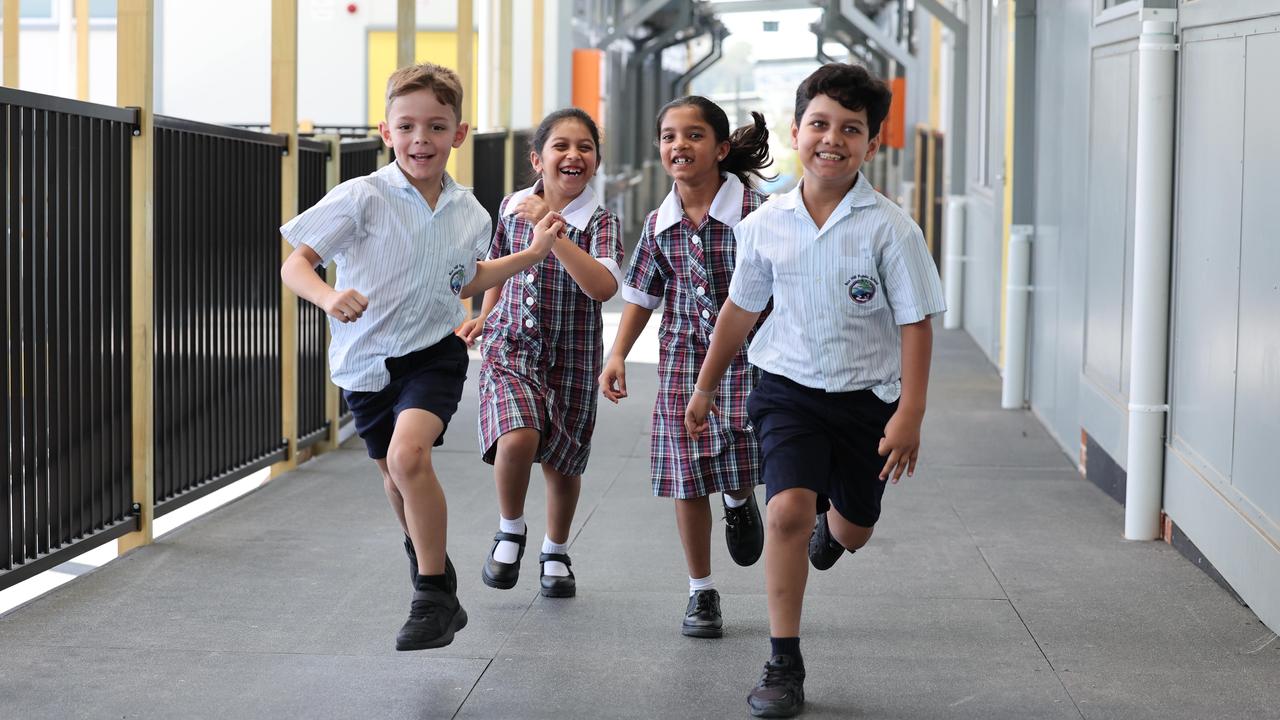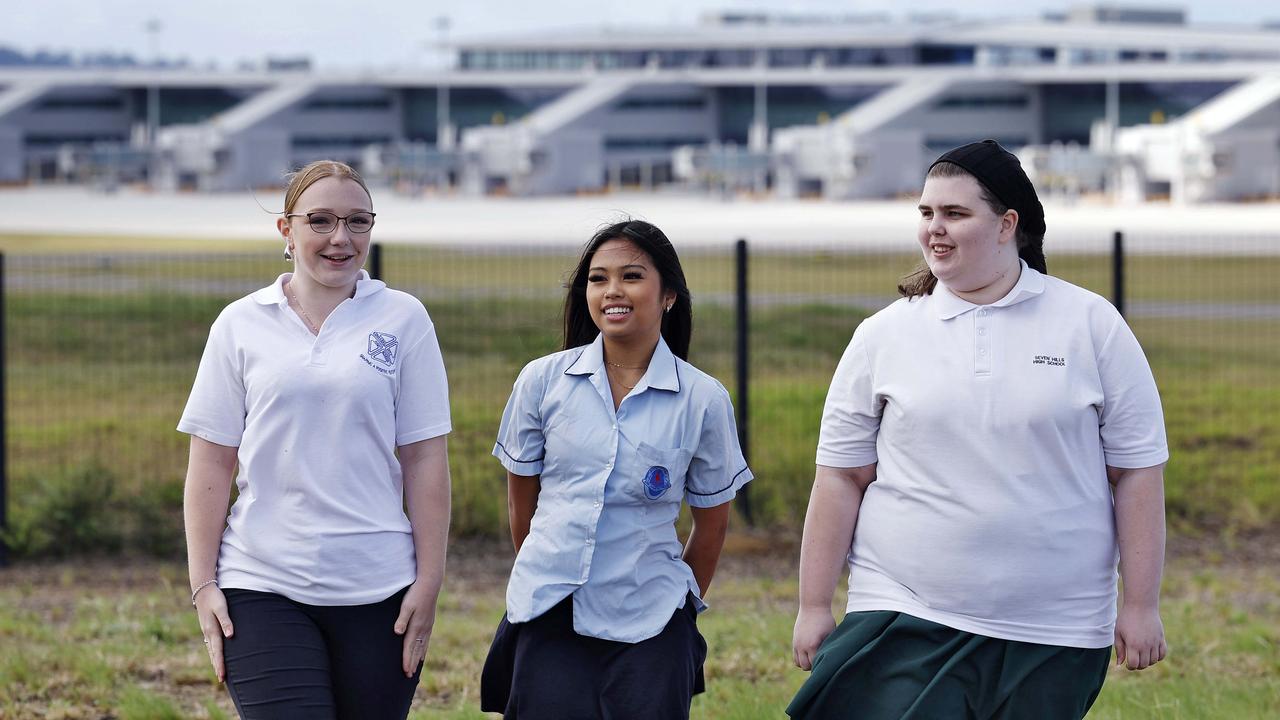Teachers’ plea to Albanese and Minns over school support staff for Western Sydney’s kids in need
While the debate continues over how much government funding private schools should receive, some public schools are having to use more and more demountables.
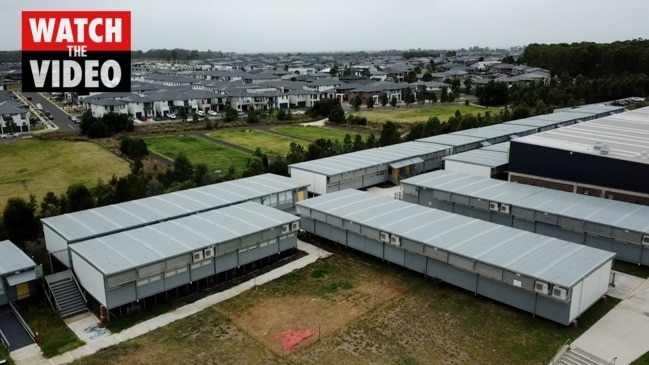
Education
Don't miss out on the headlines from Education. Followed categories will be added to My News.
The neediest Western Sydney school kids are at risk of losing specialist support staff in the classroom due to underfunding and budget cuts, their teachers say, in a plea to the Minns and Albanese governments for more support.
Children with special needs at public schools within federal Education Minister Jason Clare’s Bankstown electorate are being crammed into poorly resourced “support units”, while principals are feeling the squeeze from a 1.25 per cent discretionary budget reduction from the NSW government.
Southwest Sydney teacher and union activist John Morris said across the city, schools’ green space is shrinking, classes are being collapsed and the proportion of special needs students is constantly rising.
While a flood of Rudd-era funding made an “instant” difference back in 2009, Mr Morris said, schools have been “treading water” for the 15 years since.
“It was like a miracle overnight, and that has been slowly whittled away. What Paul gave, Peter took away,” he said.
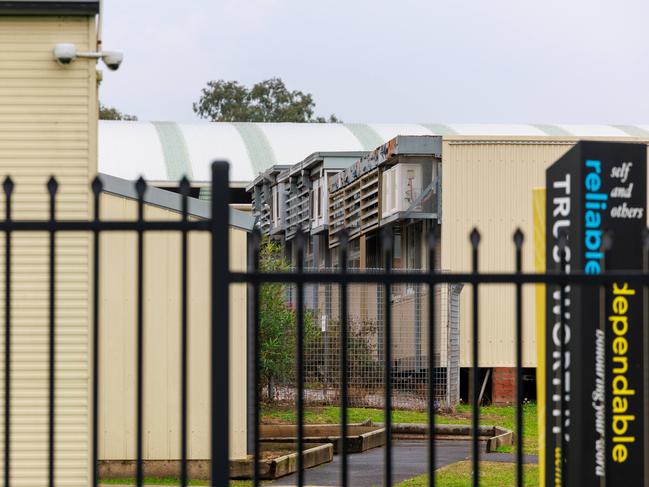
At Chester Hill High School an ever-increasing number of tightly-packed demountable classrooms – up has from 30 in 2023 to 33 today – has seen students crammed into noisy and chaotic outdoor corridors despite the promise of Commonwealth-funded upgrades.
English teacher and president of the Canterbury-Bankstown Teachers’ Association Joel Wallington said the majority of those constitute the Intensive English Centre for ESL kids, where students have been learning in demountables since the 60s.
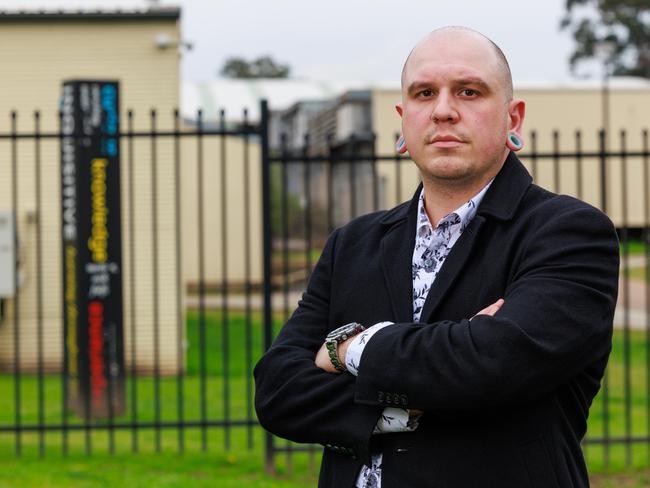
“The idea that they are temporary is long out the window – we would love to have permanent buildings, but the reality suggests that won’t ever be the case,” he said.
His “number one” priority is finding the money for language support staff for the many students in the area with complex needs, which he fears will disappear next time a state budget is handed down.
“If we had the full 100 per cent of the (school resourcing standard), those would be permanent positions,” Mr Wallington said.
Twenty kilometres north, at Beecroft Public School parents have been squirrelling away additional levies into a ‘building fund’ over eight years to construct a new out-of-school-hours childcare centre.
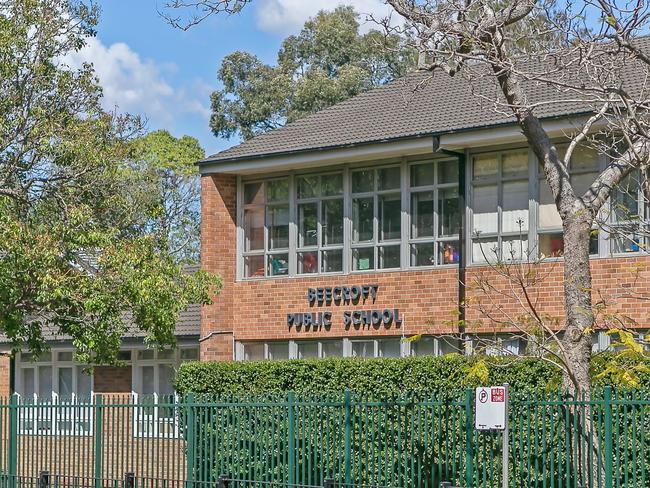
P&C president Pradeep Panneerselvam said while the Department of Education’s ‘asset management unit’ has been supportive, it has been hamstrung by a tight budget and couldn’t chip in when the estimate cost of the OOSH project doubled following Covid delays.
“We don’t have any say in the tender … we can only provide them the money,” Mr Panneerselvam said.
“There’s not enough resourcing from the government, but without an OOSH, it puts pressure on families if their children don’t have somewhere to go before they finish work.”
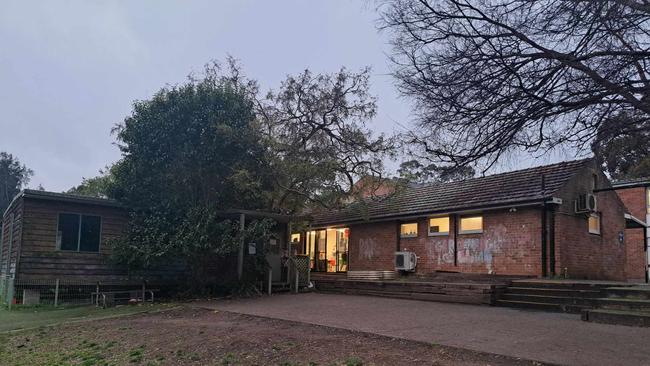
Ballina MP and NSW Greens education spokeswoman Tamara Smith, herself a former teacher of 20 years, said teachers in local public schools are still “scrounging for pens and text books”.
“The gap in resourcing has only gotten wider in the last few decades as a result of inequitable funding,” she said.
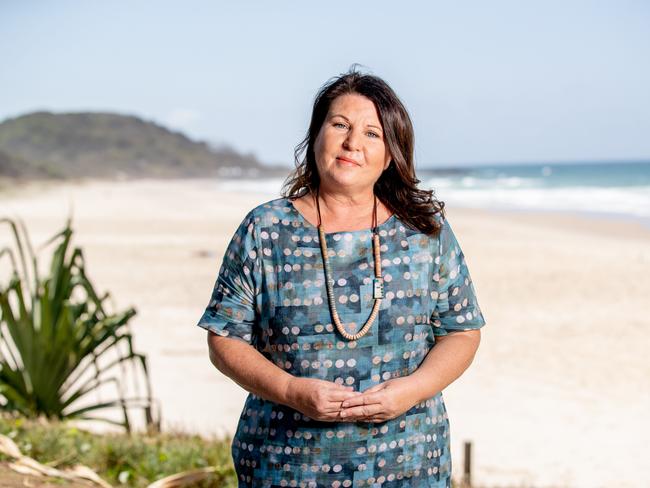
Education Minister Prue Car said the reduction to schools’ budgets followed a drop in enrolments, and changes were “carefully aimed at getting more teachers in front of classes” with teaching and learning prioritised.
“I am fighting for every dollar to ensure NSW public school students get a fair go from the Commonwealth government, who have the means to ensure we get to 100 per cent of the Gonski standard,” she said.
Australia has one of the highest rates of private schooling in the world, accounting for 37 per cent of students, with nearly twice as many kids enrolled in non-government schools as the OECD average.
The Association of Independent Schools of NSW argues any reduction to that ratio would cost a bomb.
“Based on Productivity Commission data, the additional cost to taxpayers if all NSW students were educated in government schools would be some $9,500 per student or well over $4 billion per year,” a spokesman said.




